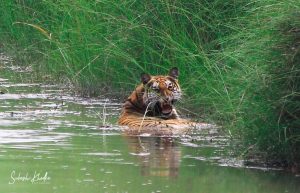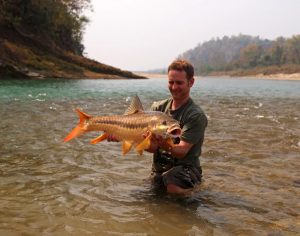Gulariya Municipality, situated in the Bardiya District of Province No. 5, Nepal, serves as a significant administrative and urban center in the western part of the country. Nestled amidst the Terai region, it is flanked by the Churia hills to the north and the Geruwa River to the west. The municipality boasts a diverse population representing various ethnicities and communities, contributing to its rich cultural tapestry. Agriculture forms the backbone of the local economy, supplemented by trade, small businesses, and services. Basic infrastructure including roads, schools, health centers, and markets supports the daily lives of residents. Gulariya is characterized by its vibrant festivals, traditions, and cultural heritage, offering visitors a glimpse into local customs and practices. As a gateway to Bardia National Park, the municipality attracts tourists seeking wildlife encounters and nature-based adventures. Development initiatives spearheaded by the local government aim to enhance infrastructure, education, healthcare, and other essential services, ensuring the well-being and progress of its populace.
Location: Gulariya is located in the western part of Bardia District, bordering Kailali District to the west and Banke District to the south. It lies along the banks of the Karnali River, one of the major rivers in Nepal.
Geography: The geography of Gulariya is characterized by flat plains and fertile agricultural lands. The Karnali River and its tributaries flow through the region, providing vital irrigation for rice cultivation and supporting diverse ecosystems.
Administration: Gulariya is a municipality that was established in 1997 through the merger of former Village Development Committees (VDCs) in the area. It is divided into several wards and has its administrative headquarters located in the town of Gulariya.
Economy: Agriculture is the backbone of the local economy in Gulariya. The region’s fertile soil and access to water resources support the cultivation of crops such as rice, wheat, maize, sugarcane, and vegetables. Livestock farming, including buffalo rearing, is also prevalent.
Transportation: Gulariya is accessible by road via the Mahendra Highway, which runs through the district. The highway connects Gulariya to major cities and towns in Nepal, facilitating transportation of agricultural products and providing access to markets and services.
Tourism: While Gulariya itself may not be a major tourist destination, it serves as a commercial and transportation hub for travelers visiting Bardia National Park and other attractions in the region. The town offers accommodations, restaurants, and other amenities for travelers.
Culture and Demographics: Gulariya is home to a diverse population comprising various ethnic groups, including Tharus, Brahmins, Chhetris, and indigenous communities. The region’s cultural heritage is reflected in traditional music, dance, festivals, and craftsmanship.
Development: In recent years, Gulariya has seen infrastructural development and improvements in basic services such as healthcare, education, and sanitation. Efforts are ongoing to promote economic growth, sustainable agriculture, and community development in the municipality.
Gulariya serves as an important commercial and administrative center in Bardia District, contributing to the region’s agricultural productivity and cultural richness.







